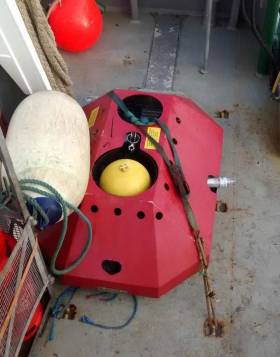Displaying items by tag: Seismometers
Marine Notice: Deployment Of Ocean-Bottom Seismometers
#MarineNotice - The latest Marine Notice from the Department of Transport, Tourism and Sport (DTTAS) advises that marine scientists from the Dublin Institute of Advanced Studies (DIAS) are deploying a tsunameter close to the new location of the M4 weather buoy off the Donegal coast.
In addition to the tsunameter, they will also deploy a sub-surface buoy with an acoustic Doppler current profiler (ADCP) mounted on it, as well as pressure sensors clamped to a moored string to measure pressure variations at depth. This system will be deployed in proximity to the tsunameter location but not too close to avoid tangling.
The tsunameter and system used for the ADCP and the pressure string sensors is scheduled to be be deployed imminently from the RV Celtic Voyager (Callsign: EIQN) at latitude 54°59.892 N, longitude 009°58.14 W, at a depth of 119m adjacent to M4 weather buoy.
As this is sensitive scientific equipment, it is requested that fisherman and marine operators engaged in such activities as bottom trawling or laying of static gear avoid the locations concerned to avoid damaging the equipment or damaging fishing gear.
#MarineNotice - The first Marine Notice of 2016 from the Department of Transport, Tourism and Sport (DTTAS) advises that the Dublin Institute for Advanced Studies (DIAS) is deploying 10 Ocean Bottom Seismometers for a period of seven months off the North West Coast of Ireland.
The OBS units will be deployed from the Marine Institute vessel RV Celtic Voyager between 13 and 22 January. They will be free-falled to the bottom and anchored by a 400kg clump weight.
The OBS units in shallow water will have a yellow surface marker buoy and a yellow flashing light with the following characteristics: FL (5) Y 20s and with a range of 2 nautical miles.
Station 1 will be located close to the M4 Weather Buoy which is the subject of a prior marine notice (No 11 of 2007).
As this is sensitive scientific equipment, it is requested that fisherman and marine operators engaged in such activities as bottom trawling or laying of static gear avoid the locations concerned to avoid damaging the equipment or damaging fishing gear.
Full co-ordinates of the OBS locations are included in Marine Notice No 1 of 2016, a PDF of which is available to read or download HERE.






























































